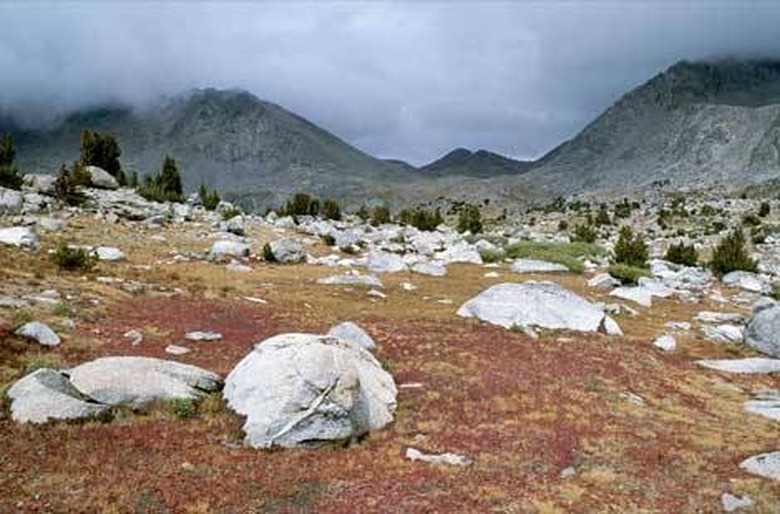What Causes A Tundra To Form?
The tundra is one of the coldest regions on the planet, with an average temperature of 16 degrees Fahrenheit. Several key factors help geologists and environmentalists determine the conditions of a tundra. The Koppen system classifies a tundra as Dfc. The "D" pertains to the tundra's snowy climate. The "f" stands for sufficient precipitation year-round, and the "c" indicates that fewer than four months have average temperatures over 50 degrees Fahrenheit, or 1 degree on the Celsius scale. Precipitation is sparse and primarily snow, with no more than 18 inches a year. There are tundras in northern Europe, Russia, parts of Alaska, and northern Canada–all near the Arctic Circle.
A tundra forms because the area takes in more carbon dioxide than it produces. The tundra is one of Earth's three major carbon dioxide sinks. Plants indigenous to the tundra region do not undergo a regular photosynthetic cycle. They absorb oxygen during the short summer months but quickly freeze during winter and trap in carbon dioxide. Normally plants give off carbon dioxide when they decompose, but in the tundra they undergo a phenomenon called permafrost. Scientists have uncovered thousand-year-old plants frozen in the tundra permafrost.
The northern latitude and unusually cold climate create the unique soil structure of the tundra. The permafrost is a layer of Earth's soil that freezes all year long. The animals in tundra regions are prevented from burrowing into the surface, as so many other species do in warmer climates. The permafrost acts as a barrier, providing no shelter from the harsh winds and temperatures. Only a portion of the topsoil thaws during the summer months, and the lower soil remains biologically inactive.
Several plants and animals have adapted to the tundra and its harsh conditions. Cushion plants like moss, heaths, and lichen grow in warm rock depressions where there is shelter from the harsh winds. This creates a soggy bottom floor covered with marshes and boggy lakes. This also makes the tundra an insect-rich environment, supporting species of mosquitoes, flies and midges. Larger animals like mountain goats, foxes and caribou have adapted to live in the tundra's barren wasteland.
References
Cite This Article
MLA
Blackmon, Frederick S.. "What Causes A Tundra To Form?" sciencing.com, https://www.sciencing.com/causes-tundra-form-5161656/. 22 November 2019.
APA
Blackmon, Frederick S.. (2019, November 22). What Causes A Tundra To Form?. sciencing.com. Retrieved from https://www.sciencing.com/causes-tundra-form-5161656/
Chicago
Blackmon, Frederick S.. What Causes A Tundra To Form? last modified March 24, 2022. https://www.sciencing.com/causes-tundra-form-5161656/
